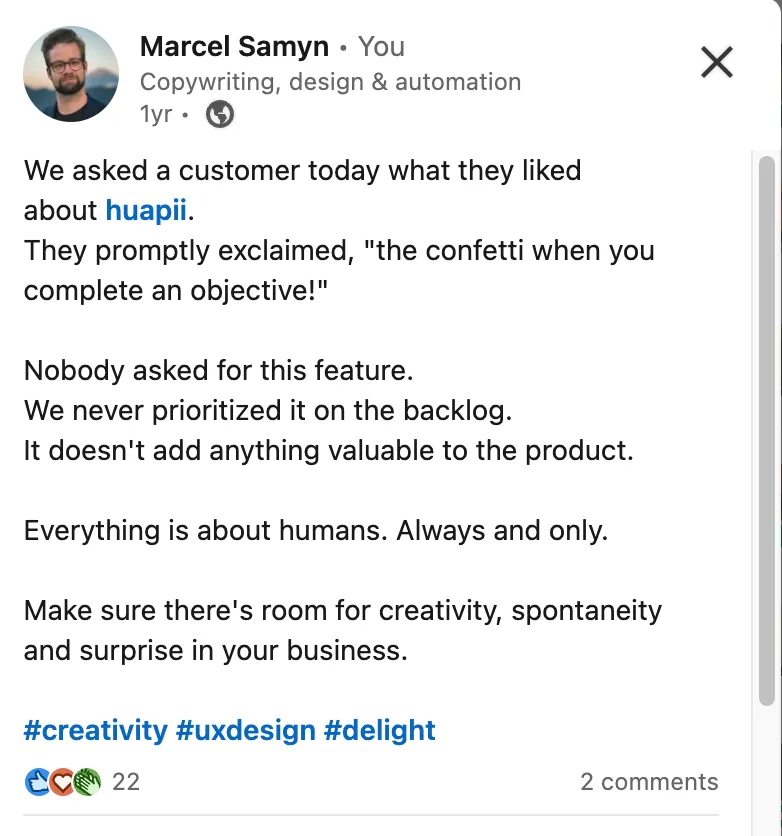· 3 min read
The Chain of Beliefs: turning leads into lovers (not literally)

What if you didn’t have to “sell”?
What if your prospects were thinking “gee, I wish I had X” where X is exactly your offer?
We can get them there, strategically.
And today I’ll share a tool you can use to do that.
It’s quite simple, really. It’s just that most people don’t directly tackle the literal question.
The question is this: what does my lead need to believe by the time they’re ready to make a buy decision?
Think about this. They will need to believe they need your product, they need it now and they need it from you specifically. Why? What are those beliefs specifically?
For me, I could think of statements like:
- Mundane, repetitive tasks should be automated as much as possible.
- It really matters that what we put out in the world is beautiful, just “having a funnel” doesn’t satisfy me enough.
- Marcel has a unique perspective in holistically combining the tech, the beauty and the mental health. I want that and there’s nobody better than him at this.
Once you have the beliefs, you’ll have to find a way to install them.
We can’t just tell people these statements…
We have to tell a story where your belief is the “big takeaway” and let the reader discover it by themselves.
Here’s an example from my work as software engineer:

So the next step is to sequence out those beliefs and weave a story out of it. You should end up with a bullet point list of scenes with your beliefs as takeaways.
This is how one client, when I started talking to her, thought that she didn’t have a big story or epiphany moment…
But as I pieced together her timeline, together with the important beliefs of the product, we crafted a beautiful story.
“Wow, I didn’t know my story was this inspiring!”
I hope you’ll discover that when you reflect on your own journey.
Here are the exact steps for this:
- Determine the “end point,” the final set of beliefs.
- Determine the “start point:” what do your leads believe right now? How do they look at their life?
- Fill in the steps in between. Decide what story and what belief you’ll teach in each of those steps.
For bonus points, naming things is extremely effective.
Think about that start point and describe the symptoms your audience is facing right now. Find a name for this “problem bucket,” or a way to describe the “real underlying problem.”
That way, once you’ve described your audience’s problems to them, and you started telling your story—you can tell them, something like: “yeah, the real reason you’re struggling with this is because you’re in starter mode. You’re stuck in the hustle and the grind of starting a new business. You needed that in the beginning, but your next level of growth is when you decide you’ll run a calm business, when you decide that you’ll do things with excellence, with beauty, right from the first time.”
You see there that I also named the solution, a calm business.
Okay.
What now?
These notes are your blueprint.
They’re the foundation of your social media content, your email newsletter, the copywriting on your website.
These are the exact things you need to tell your audience.
So build an email sequence from this. Draw on this for all of your posts. Tell these stories on sales calls.
You just created a goldmine.
So selling becomes easy.
And sure, maybe this works for literal lovers too.
Keep crushing it. With love. Marcel
Don't miss the next ones